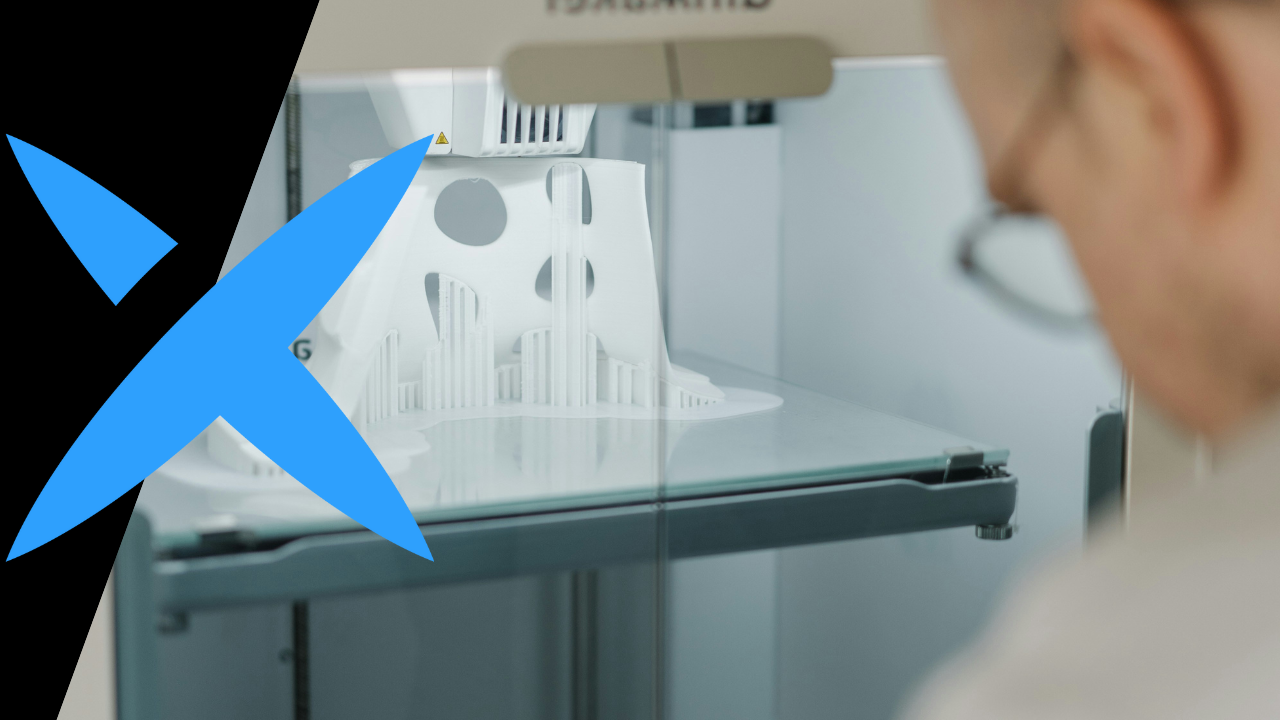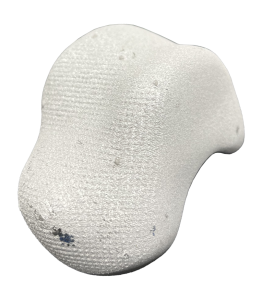Is It Possible to Sandblast 3D Printed Parts?

In the additive manufacturing industry, a typical question might be: “Is it possible to sandblast parts created using 3D printing?” The straightforward answer is yes. However, with the development of new, advanced abrasives like EpiX from 10X Engineered Materials, this process has improved significantly.
Sandblasting 3D printed parts is an important step in post-processing. After printing, parts often have visible layer lines, support structures, and surface imperfections that need to be smoothed out. This is where sandblasting comes in, using high-pressure air to propel abrasive particles against the surface, removing unwanted material and creating a smooth finish.
EpiX-EP, EpiX-MP, and EpiX-LP are superoxalloy abrasives that are advancing the art of 3D print sandblasting. These materials offer high performance with minimal particle embedment, addressing a common issue in traditional sandblasting methods.
To understand the process better, imagine a laboratory scenario. Engineers look at a freshly printed cobalt chrome alloy part with a surface marked by layer lines and support structures. They begin sandblasting the 3D printed part with EpiX. The unique amorphous structure of EpiX particles allows them to maintain their shape throughout the sandblasting process, acting like tiny sculptors.
An engineer points to the part emerging from the sandblasting chamber. “Notice how EpiX removes material precisely, smoothing layer lines and eliminating support structures without damaging the part’s integrity.”
As they continue sandblasting 3D printed parts, the results become evident. The cobalt chrome alloy component, previously rough and unfinished, now displays a smooth, consistent surface finish. This transformation demonstrates the precision achievable with 3D print sandblasting using unique abrasives like EpiX.

EpiX Offers Several Advantages for Sandblasting 3D Prints:
- Efficiency: EpiX superoxalloy abrasives provide a more effective blasting step compared to conventional abrasives, often reducing or eliminating the need for secondary processing.
- Versatility: EpiX is suitable for a wide range of materials, from plastics to metals like cobalt chrome alloy, making it suitable for many types of 3D printing applications.
- Safety: EpiX prioritizes worker safety, it is made of the only abrasive material in the world backed by an IARC monograph certifying its safety profile.
- Precision: EpiX comes in three size ranges, EP Enhanced Profile, MP Moderate Profile, and LP Low Profile. These products are used to meet specific 3D printing needs and are used on a range of 3D printed parts with improved surface finishes.
In practical applications, the benefits of EpiX in 3D print sandblasting become clear. For instance, a medical device manufacturer working with intricate cobalt chrome alloy 3D printed parts might see:
- Reduction or elimination of some secondary processing and surface finishing steps
- Significant improvement in surface finish quality and consistency
- Enhanced adhesion strength in subsequent coating applications
- Decrease in rejected parts because of finishing imperfections
These improvements illustrate how advanced superoxalloy abrasives are not just changing the sandblasting process but expanding the possibilities in additive manufacturing. Parts that previously required multiple finishing steps can now often be completed with a single round of sandblasting.
As the field of 3D print finishing continues to progress, new technologically improved abrasives like EpiX will play an important role in refining and perfecting the production process. They’re enabling manufacturers to advance the quality of 3D printed parts, improve workplace safety, increase operational efficiency, and even reduce their direct production costs.
For those looking to optimize their 3D printing operations, exploring these advanced sandblasting solutions could be a valuable next step. Consider consulting with our experts to understand how these new abrasive technologies might benefit your manufacturing processes.
Join us in creating a more precise, efficient, and innovative 3D printing industry – one perfect finish at a time. Experience the best of sandblasting 3D prints with EpiX Superoxalloy.
